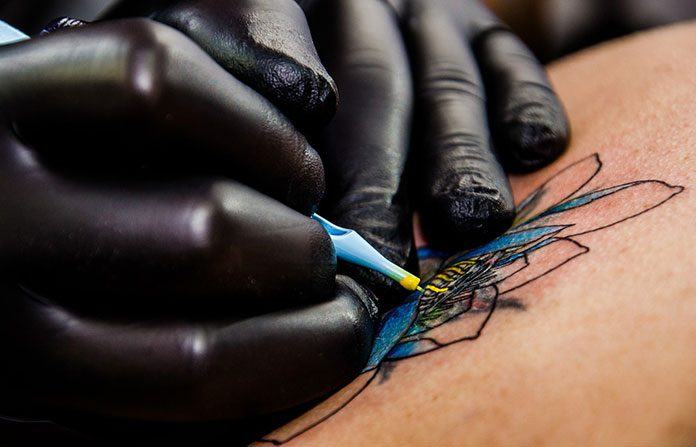Scientists from Tel Aviv University have developed a new electronic tattoo that can track activities of muscle and nerve cells. Generally, the tattoo is made by ink into the dermis layer of skin to change the pigment. But this new electronic tattoo consists of a carbon electrode, a sticky surface, and a nanotechnology-based conductive polymer coating. The sticky surface joins to the skin and polymer coating improves the electrodes performance. It records a strong, stable signal for hours on end without irritating the skin.
Professor Yael Hanein, head of TAU’s Center for Nanoscience and Nanotechnology developed the electrode. This electrode may enhance the therapeutic restoration of damaged nerves and tissue. This may also cause new insights into our emotional life. The application of this new electrode to outline emotions by tracking facial expressions. The facial expressions are tracked through electrical signals received from facial muscles.
Prof. Hanein, said, “The ability to detect and draw people’s emotions has many potential uses. Advertisers, pollsters, media professionals, and others all want to test people’s reactions to various products and situations. Today, with no accurate scientific tools available, they mostly depend on inevitably subjective questionnaires.”
Researchers from the whole world are trying to develop different methods to draw emotions by detecting facial expressions, mostly via photos and smart software. But our skin electrode provides a more direct and convenient solution,” he continued.
Primarily, this device was made as a substitute of electromyography. Electromyography is a test that determines muscle’s and nerve cell’s health. This technique is very uncomfortable and unpleasant and requires patients to lie inactive in the lab for hours on end.
Frequently a needle stuck into to record electrical activity or a cold and sticky gel is applied on patients. After that, they are attached to heavy electrode surfaces.
This tattoo allows patients to continue with their daily routines. On the other hand, electrodes monitor their muscles and nerve activity.
Prof. Hanein said, “The idea is: stick it on and forget about it.”
Applications of this electronic tattoo
This electronic tattoo is used to transforming medicines, restoration, and also in business and marketing research. According to Prof. Hanein, this new skin electrode can be also used in essential therapeutic applications. This tattoo will be used for patients with the neurodegenerative disease to track their muscles activity.
Prof. Hanein, said, “It’s not enough. The physiological data measured in certain muscles may be used in the future to indicate the alertness of drivers on the road; patients in rehabilitation following stroke or brain injury may utilize the ‘tattoo’ to improve muscle control, and amputees may employ it to move artificial limbs with remaining muscles.”
